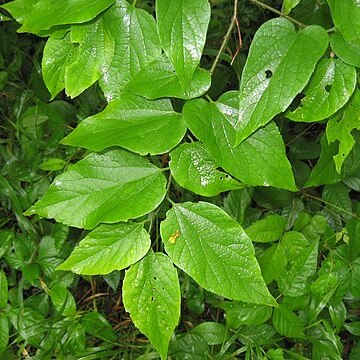A deciduous shrub or small tree. It can grow 9 m high. It has an irregular shape. The trunk can be 10 cm across. The leaves have a rough surface. They are round and 5 cm long. They are grey-green. The flowers are 3 mm wide and green. Male and female flowers are at the base of young leaves. The fruit are dark red. They are 6-8 mm across. They have one seed.

